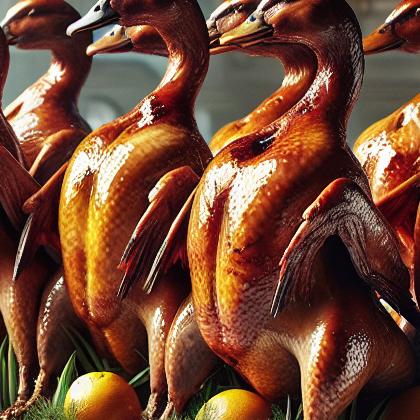Showing results for 'Duck carcasses'
close
Duck Carcasses

Duck is the common name for a large number of species in the Anatidae family of birds which also includes swans and geese. The ducks are divided among several subfamilies in the Anatidae family; they do not represent a monophyletic group (the group of all descendants of a single common ancestral species) but a form taxon, since swans and geese are not considered ducks. Ducks are mostly aquatic birds, mostly smaller than the swans and geese, and may be found in both fresh water and sea water.
Duck carcasses Pairs With:
Food Item
Flavor Affinity Level
Duck carcasses Properties:
| Food Property | Type | Description |
|---|---|---|
| Flavor Profile | Umami | Duck carcasses have a rich and savory umami flavor due to the presence of glutamate and inosinate. |
| Texture | Firmness | Duck carcasses are firm in texture, especially when raw. |
| Nutritional Value | Macronutrients | Duck carcasses are a good source of protein and healthy fats. |
| Micronutrients | Duck carcasses contain various vitamins and minerals such as iron, zinc, and vitamin B12. | |
| Texture | Moisture | Duck carcasses are moist when cooked properly, making them juicy and flavorful. |
| Color | Maillard Reaction | Duck carcasses develop a deep brown color on the skin when roasted, due to the Maillard reaction. |
| Aroma | Volatile Compounds | Duck carcasses have a rich and aromatic smell when cooked, attributed to the presence of various volatile compounds. |
| Chemical Composition | Acidity/Alkalinity (pH) | Duck carcasses have a slightly acidic pH level, typically between 5.5-6.5. |
| Cooking Behavior | Heat Conductivity | Duck carcasses have good heat conductivity, allowing them to cook evenly and retain moisture. |
| Water Retention | Duck carcasses have good water retention properties, resulting in juicy and tender meat. |
Food Pairing App - Version 1.2.0
